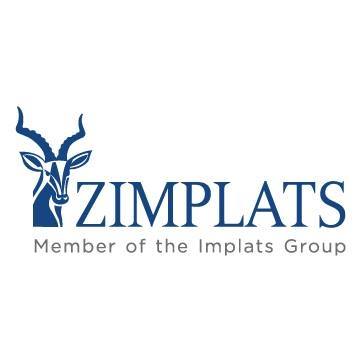Zimbabwe’s commitment to industrial advancement and sustainable development was recently underscored with Zimplats’ official commissioning of its First Phase 185 MW Solar Project and an expanded smelter at the Selous Metallurgical Complex. Zimplats is a prominent member of the Implats Group and Zimbabwe’s largest Platinum Group Metals (PGMs) producer. The prestigious commissioning ceremony, held on July 23, 2025, was presided over by His Excellency, President Dr. E. D. Mnangagwa, who lauded these developments as a remarkable milestone in the nation’s quest for energy self-sufficiency and environmental sustainability.
President Mnangagwa, who toured the facilities, cut the ribbon, and unveiled plaques for both the smelter expansion plant and the Phase 1 35MW solar power plant, emphasized Zimplats’ pivotal role as a strategic partner in Zimbabwe’s ongoing industrialisation journey towards Vision 2030. He highlighted these projects as a prime example of what can be achieved through robust collaboration and unity of purpose among Government, industry, and communities. Such synergies, he noted, are crucial across all sectors to yield tangible economic benefits, including job creation, foreign currency savings, fiscal contributions, and the accelerated adoption of green and clean energy.
The commissioning of the 38MW furnace marks a defining moment for Zimplats and the broader mining sector. Officials say that this significant US$398 million investment project has resulted in a three-fold increase in the company′s smelting capacity, enabling Zimplats to process an impressive 380,000 tonnes of concentrate annually. This expanded smelter, built for US360 million, is designed to improve processing capacity, enhance environmental performance, and lower energy costs, tripling Zimplats’ overall smelting capacity. The facility itself is a colossal undertaking, spanning an area equivalent to 12 football fields. Its construction required immense resources, including 17,000 cubic metres of concrete, 3,500 tonnes of steel, 18 kilometres of pipework, and 350 kilometres of cabling. Notably, the majority of materials and labour for this ambitious project were sourced locally, except where specific technology was unavailable.
This expansion is expected to further transform Zimbabwe into a regional hub for platinum processing, creating vital employment opportunities and acting as a catalyst for downstream industries. At its peak, the project created over 1,600 jobs, with invaluable knowledge transfer occurring during the construction phase, particularly benefiting young artisans and contributing to the growth of skills within the local workforce. This aligns seamlessly with the Government’s vision of fostering a skilled workforce to drive the country’s re-industrialisation efforts.
Equally celebrated was the completion of Phase 1 of the solar project, which generates 35MW of electricity. This initial phase impressively provides 8% of Zimplats’ energy requirements, demonstrating the company’s steadfast commitment to clean energy and a sustainable future. This US$37 million investment in renewable energy is a clear indication that embracing green technologies is not just an environmental imperative but also a smart economic decision. The President urged other industry players in Zimbabwe to follow suit, highlighting that this plant will significantly reduce Zimplats’ reliance on external power sources, thereby contributing to national energy security. The subsequent three phases are planned to increase Zimplats’ power-generation capacity to 185MW, ultimately meeting its projected electricity needs upon the completion of its broader Expansion Programme.
The environmental benefits of the solar plant are substantial; by reducing the carbon footprint of Zimplats’ operations, the company is taking an important step towards shared goals of a cleaner and more sustainable environment, aligning perfectly with national objectives to combat climate change. The solar plant sits on 109 hectares and features 74,000 solar panels mounted on a single-axis tracking system, along with state-of-the-art production control and security systems. It is the first of four phases for the 185MW PV solar project to be implemented across Zimplats’ two operating sites in Ngezi and Selous.
President Mnangagwa also commended Zimplats for prioritizing comprehensive community engagement throughout the project’s lifecycle, from crucial pre-construction consultations to providing essential employment opportunities. Zimplats’ ongoing empowerment programme, which received Government approval two years prior, deeply resonates with the national strategic and policy quest to uplift livelihoods among rural communities. The local enterprise development programme being undertaken has successfully incubated 23 small and medium enterprises engaged in manufacturing, as well as the provision of engineering and other services. Additionally, Zimplats has invested in five associate companies where the Zimplats Mhondoro-Ngezi, Chegutu, and Zvimba Community Share Ownership Trust holds shareholding. These initiatives are expected to significantly contribute to nurturing sustainable and empowered communities.
The commissioning of both the 38MW smelter and the 35MW solar plant embodies the overarching vision of an industrialised Zimbabwe, powered by sustainable energy, where communities thrive, jobs are created, and invaluable skills are transferred. President Mnangagwa extended his deepest gratitude to the dedicated men and women of Zimplats who tirelessly worked on these projects, urging continued collaboration to build a prosperous, energy-secure, and environmentally sustainable Zimbabwe for generations to come. With these remarks, he officially declared both the 38MW smelter and the 35MW solar plant at Zimplats’ Selous Metallurgical Complex officially commissioned.

